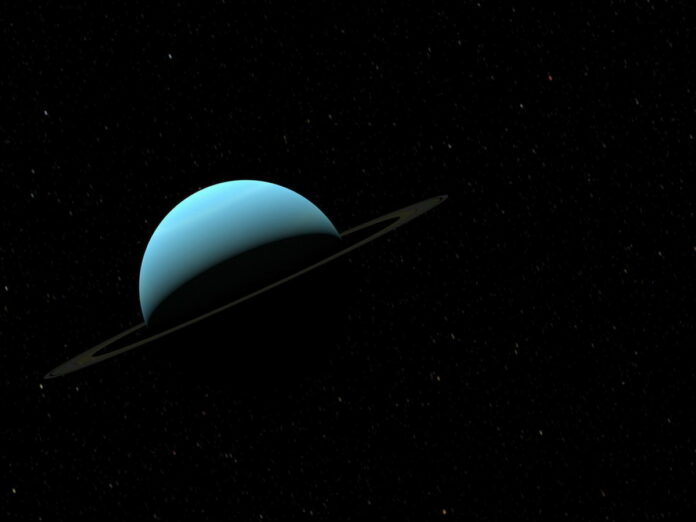In this article, we want to share with you some interesting facts about Uranus—the seventh planet from the Sun, which remains largely unexplored. This ice giant is significantly different from other giant planets in our system. Here are some additional fascinating facts about Uranus:
Interesting Facts About Uranus
- Storms: Uranus periodically experiences strong storms that cover areas equivalent to the size of the North American continent.
- Atmosphere: Uranus has the coldest atmosphere of any known planet, with temperatures around -224 degrees Celsius.
- Axial Tilt: Because the planet’s axis is so severely tilted toward the North Pole, day and night each last 42 Earth years.
- Moons: Most of Uranus’s moons were discovered in 1986 during the flyby of the Voyager 2 spacecraft.
- Magnetic Field: Uranus has a strong magnetic field, but it has some peculiarities. For some reason, it is about ten times stronger in the southern hemisphere than in the northern.
- Methane: The presence of methane in Uranus’s atmosphere gives the gas giant its characteristic blue-green color.
- Miranda: One of Uranus’s moons, Miranda, has one of the strangest surfaces among all known moons. Scientists believe that Miranda might have been shattered by a collision with another celestial body, but its fragments were pulled back together into a spherical shape by gravity.
- Rotation: A day on Uranus lasts about 17 hours: it rotates on its axis in 17 hours and 14 minutes.
- Moons’ Sizes: Uranus has fewer moons than other gas giants in our system, and only five of them are significant in size. The largest of these—Titania and Oberon—are only half the diameter of our Moon. All of Uranus’s moons are named after characters from the works of William Shakespeare and Alexander Pope.
- Gravity: Despite Uranus’s size, its gravity (free-fall acceleration) is about ten percent lower than that of Earth.
- Voyager 2: An interesting fact about Uranus is that reaching it requires a lot of energy, which is why the interplanetary navigator Voyager 2 has visited the ice giant only once.
- Discovery: Uranus was the first planet discovered after the invention of the telescope. It was recorded by John Flamsteed in 1690, who initially thought it was a star.
- Moons’ Count: With 27 moons, Uranus ranks third in the Solar System in terms of the number of moons.
- Seasons: One part of the planet experiences summer, with the scorching sun directly over the poles, while the other part endures a harsh winter in darkness.
- Rings: One theory about the origin of Uranus’s rings suggests that they may have been formed from a moon that was shattered by a collision with other celestial bodies. Many scientists believe that Uranus’s rings are still very young, which might be indicated by their dark color and narrow width.
- Heat Emission: Low heat emission is one of the main mysteries of Uranus. In general, all large planets emit 2.5 times more heat than they receive from the Sun.
- Observation: To study any details of Uranus’s disk, you would need a telescope with a 250-millimeter lens.
- Composition: Up to 80% of Uranus consists of fluid, with a solid core at the center of the planet. Uranus is one of the ice giants.
